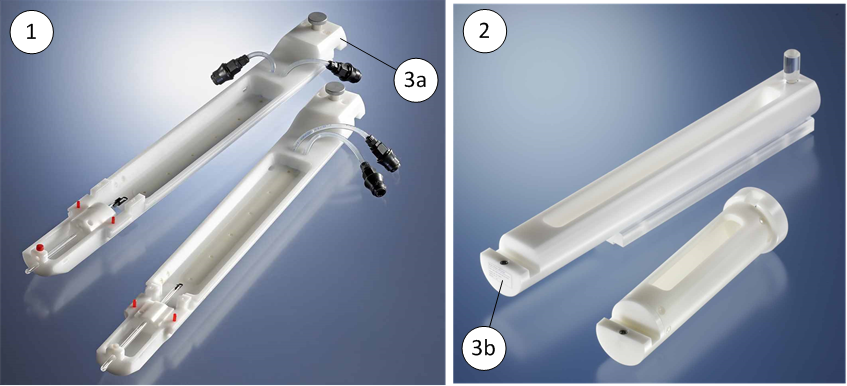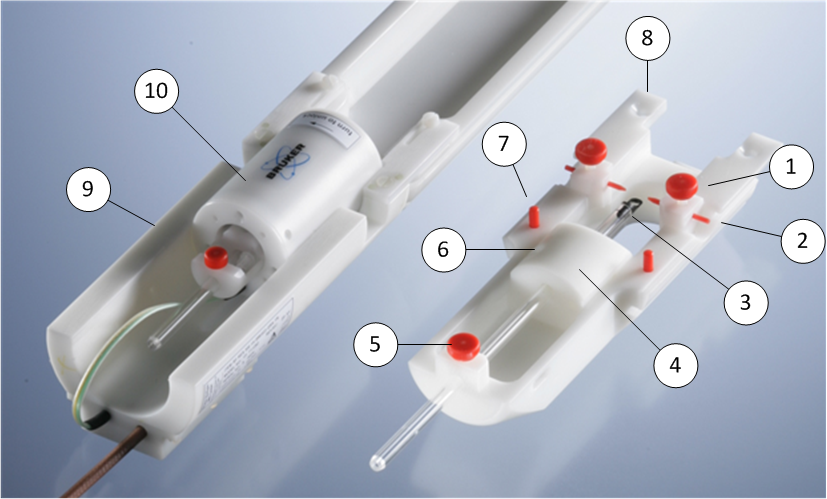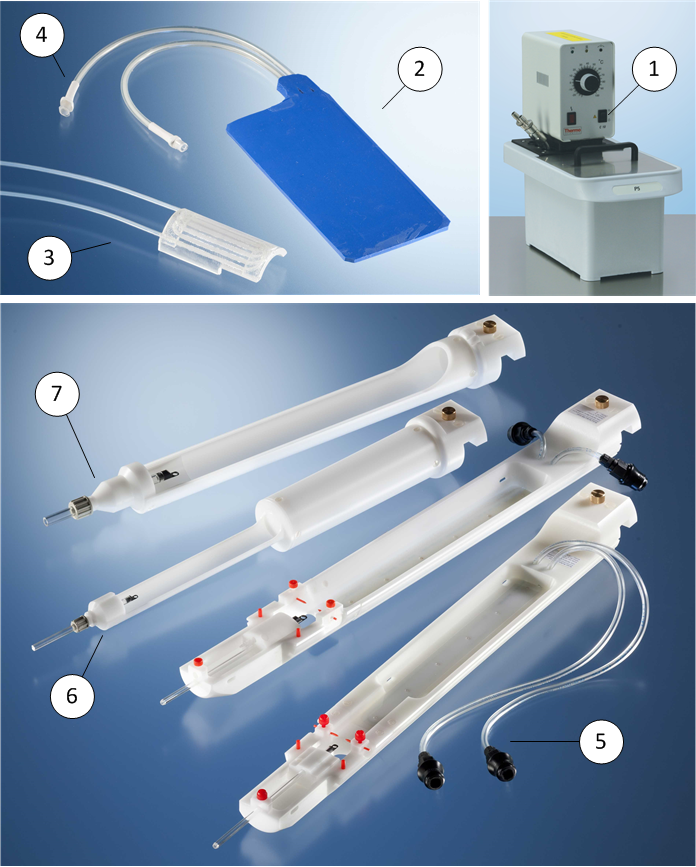Using Animal Cradles
All Bruker animal cradles are compatible with the different animal positioning systems. This is possible via a standardized interface connection point common to all positioning systems.
Animal cradles – overview
The following figure shows two different configurations of the mouse base bed.
The mouse head TIP illustrated on the left is used together with the 23 mm volume coil and the mouse base bed, which form the configuration for mouse head investigations. The mouse brain TIP (TIP RFSUC) illustrated on the right is used together with brain surface coils or surface coil arrays for mouse brain investigations.
The mouse head TIP illustrated on the left is used together with the 23 mm volume coil and the mouse base bed, which form the configuration for mouse head investigations. The mouse brain TIP (TIP RFSUC) illustrated on the right is used together with brain surface coils or surface coil arrays for mouse brain investigations.
Mouse base bed configurations
Die animal cradles provide various functions:
- ▪
- Size adjustment: Different sized animals can be placed safely using the mouth cone and anesthesia block (4). Therefore, loosen the fixing screws (6) and (5), and move the block in the required position.
- ▪
- Fixation: The animal head is fixed using the tooth bar and optional ear plugs. Therefore, hook the front teeth of the mouse into the bite bar (3). Place the mouse on the bed and pull the bite bar back until the mouse is properly positioned in the anesthesia block.
If required, the ear plugs can be used to fix the mouse head stereotactically. Therefore, loosen the ear plug screws (1) and slip the ear plugs (2) gently into the mouse ears. Fix the ear plug using the screws.
- ▪
- Anesthesia: The anesthesia gases can be adminster via the nose using the nose cone of the TIP. Therefore, connect the gas tube to the anesthesia block via the Luer coupling. Place the tube in a wide loop and fix it in the side channels of the base bed. Make sure, that the tube cannot be squeezed when inserting the bed into the magnet. The anesthesia gases is extracted either passive via a stand-alone extraction or actively via the nose cone extraction channels respectively the tooth bar.
- ▪
- Body temperature stabilization: The animal’s body temperature can be stabilized using the integrated water-based warming meander. Therefore, connect the black quick-lock coupling to the external warming circuit.
Different sized flexible water based warming pads are available for animal cradles, which are not equipped with integrated warming circuits.
- ▪
- Use the TIP fixation screws (8) to exchange the mouse head TIP and coil against the TIP RFSUC.
Mouse bed components in detail




